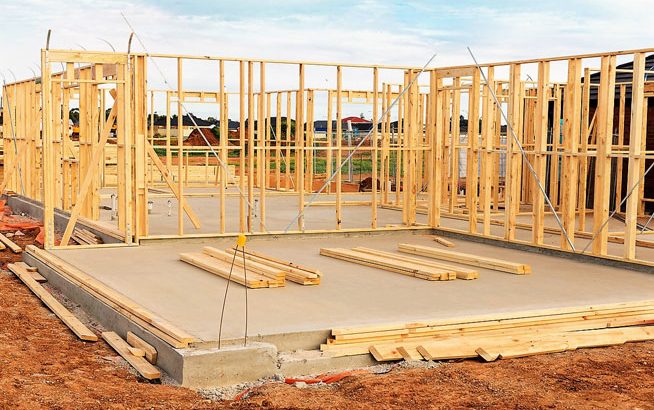The difficulties in building a house lie above all in the choice of foundations. These guarantee the stability of the building, as they distribute the loads on the ground. To choose the right foundations, you must first know the nature of the soil. Here are a few types of difficult soils with adapted foundations.
On Sandy Ground
Sandy soil is generally unstable. However, if the resistant soil is shallow, superficial foundations can stabilize the construction. Among them, we can mention the threaded footing (consisting in linearly distributing the loads), the insulated footing (installation of posts), and the inverts (reinforced concrete slabs to avoid any risk of settling). On the other hand, semi-deep or deep foundations should be considered if the resistant soil is more profound.
Building a house on sand can nevertheless have advantages, one in particular. Since the soil does not hold water (at least on the surface), it forms a barrier against freezing in winter, protecting the house’s foundation.
In the Presence of Water
Constructing a deep or semi-deep foundation on this type of land is an excellent way to prevent the house from being submerged by water or from sinking into the ground during heavy rain. According to modern construction techniques, using a waterproofing membrane is essential to guarantee better protection of the foundations.
The best solution when water is located underneath the building site, either permanently or seasonally, is drainage works or crawl space. The aim is to prevent the risk of flooding when the water rises and freezing in winter.
On Clay Soil
According to experts, clay soil is the worst for construction. It swells and shrinks constantly depending on the humidity of the ground. Researching the resistant soil below is also necessary to choose the type of foundation required to stabilize the construction. Only a professional study will determine the depth of the resistant soil. A structure on sill (a kind of horizontal beam) or pilings (piles) is possible.
On Rocky Ground
Rocky ground is far from being the first choice for building a house. However, it has excellent characteristics, such as resistance. In fact, like sand and gravel, it offers exceptional strength and stability to structures. Given the hardness of the rocks, very powerful machines must be used for the earthwork and the digging of the foundations. The main concern is the budget.
On a Slope
Creating foundations on this type of terrain can be more or less complicated, depending on the size of the slope and the quality of the soil. On the one hand, deeper foundations are required upstream. Otherwise, a greater amount of excavation will be required to level the ground. On the other hand, the soil on a slope is often heterogeneous. The soil upstream can be different from the soil downstream. This characteristic also influences the foundations and construction techniques.
On a Compressible Ground
Due to their low resistance, composite soils, such as in the bottom of a valley, are not suitable for all constructions. However, special foundations can correct this soil characteristic.
As you can see, a construction project requires some thought. In addition to urban planning constraints, the characteristics of the soil and the complexities of its development must be taken into account. For the choice of the foundation, the skills of a civil engineer are essential. A geo technician is the most qualified to diagnose the nature of the soil and the risks (flooding, settlement, etc.).



















